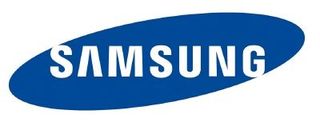Samsung's 8LPP Process Is Ready For Production

Earlier this year, Samsung announced the roadmap for its process technology for the next few years. One interesting generation was the 8 Low Power Plus (LPP) generation, which seems to be a stop-gap between Samsung’s second-generation 10nm process (10LPP) and the 7nm process that will use extreme ultraviolet (EUV) lithography.
The Fight For The 7nm Customers
Even though it’s been promised for many years, EUV lithography hasn’t been used before in production due to the difficulty and cost of implementation. And so, it looks like Samsung’s 7nm process will arrive later than TSMC’s own 7nm process, which won’t be using EUV lithography in its first generation.
Years ago, Samsung seemed to have bet on the fact that 10nm will be a long-lasting process generation, so it prioritized it over the 7nm node. Meanwhile, TSMC decided to skip the 10nm node entirely and go straight to 7nm, with its own stop-gap at 12nm, which is essentially a slightly improved 16nm process.
TSMC seems to have gotten this one right, but Samsung could also achieve early expertise on EUV lithography, which could be the future of process technology. In other words, TSMC may have won this battle, but Samsung may ultimately win the war (or at least the next few process generation battles).
8LPP Stop-Gap & Cost Savings
Because 7nm will arrive later than the competition, Samsung is now doing what TSMC did with its 12nm node and will offer a small update to its 10nm process, which it calls the 8LPP generation.
The new 8LPP generation brings a 10% improvement in power consumption, as well as up to 10% die area reduction, which could be translated into cost savings for Samsung’s customers. Samsung promises further cost-savings due to the high yield that this process generation can achieve, as it’s already based on the proven 10nm process.
Qualcomm seems to agree:
Stay on the Cutting Edge
Join the experts who read Tom's Hardware for the inside track on enthusiast PC tech news — and have for over 25 years. We'll send breaking news and in-depth reviews of CPUs, GPUs, AI, maker hardware and more straight to your inbox.
“8LPP will have a fast ramp since it uses proven 10nm process technology while providing better performance and scalability than current 10nm-based products,” said RK Chunduru, Senior Vice President of Qualcomm.
Although we may not see its high-end chips developed on Samsung’s 7nm process in the near future, it’s possible that Qualcomm will switch its Snapdragon 600 and 400 series from the current 14nm process to 8LPP. This should still translate into a significant update for mid-range processors.
Samsung will reveal availability of its 8LPP process to customers, as well as an update for its 7nm EUV process, at the Samsung Foundry Forum Europe on October 18, 2017, in Munich, Germany.
-
jasonelmore is EUV the future tho? It seems that a lot of these manufacturers have been promising EUV for over 10 years now, but when it comes time to put pen to paper they always cop out. It can't be that damn hard. Years upon years of R&D has to pay off at some point.Reply
Most Popular



